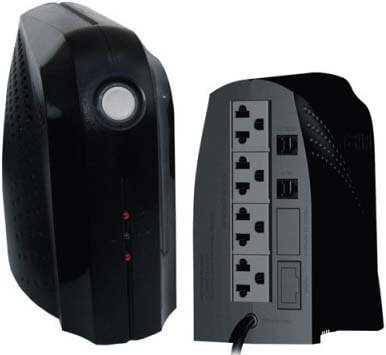 From city to city, voltage varies from 110-220v and could fry your electronics when travelling if you haven’t learned what I’m about to tell you.
From city to city, voltage varies from 110-220v and could fry your electronics when travelling if you haven’t learned what I’m about to tell you.
It’s not uncommon to arrive in a city to find out that the voltage is 110v and then to travel 1 hour north just to learn that it’s 220v in that particular city.
This is the sad and frustrating truth of the electricity situation in Brazil and on top of this, you add the element of unstable electricity due to storms and you have a quite challenging situation for your electronics.
Today, I will lay out exactly how you can find out what the voltage of a city is and what you need to know to avoid any frying of your equipment.
What Areas Are 220v And 110v, How To Know
During a recent trip to Jundiaí, São Paulo, I noticed that all of the electricity was 220v. To my surprise, everywhere outside of the city had 110v electricity.
It was quite confusing and just imagine if you moved a city over, you would either have to rewire everything or have to sell all of your electronics and buy new ones!
And what about an unknowing visitor from the USA who plugs their 110v shaver into a 220v socket? – PZZZZZ! Bye bye shaver.
It is easy to fall into this trap because despite the difference in electricity, the outlets look the same.
So you could essentially have purchased an adapter to fit your shaver into a Brazilian outlet and have no idea that it’s double the voltage.
The worst part of it all is that shavers would cost you about 3 times as much as back home to replace.
How to know what voltage your city is running
You can just ask. If you are travelling to a specific city and know someone living there then they will be happy to let you know what voltage the city runs.
If you don’t know anyone there, then you can research it on the Internet pretty easily.
I ran across a website that lists the principle cities in Brazil and what volt they use. (the page is in Portuguese but it’s easy enough to see what city runs what voltage without speaking the language).
*note that Fortaleza is the only city in Brazil that runs 240v! (I know, crazy).
If the city you are going to is not listed in the above link, then you can do a quick search on the Internet.
Here’s a video I made for you to walk you through it.
(Watch on YouTube)
Summary:
- I showed you how to go to (notice the .br at the end)
- Type the city name + “voltagem” (example: Curitiba voltagem)
- The search results are in Portuguese and if you don’t understand what is written, just translate it on
As a little side note, if you are at a hotel then they usually offer bi-volt outlets.
Also you can get voltage converters pretty easily.
Check your charger or transformer
As a rule of thumb, most all small electrical devices are dual-voltage, meaning that they will run on 100v up to 240v.
You can find out by looking on the actual charger or electric label to see what voltage it shows.

As you can see above, my charger will handle from 100-240v – so no problem!
Unstable Electricity
Electricity in Brazil is extremely unstable in some parts and can send surges to your electronic equipment that destroys its charger or transformer.
This is especially true for places where the wiring is less then up to par as whenever it rains then the power fluctuates violently.
A buddy of mine in Brazil had to change the transformer on his computer out several times a year.
Fortunately though, whenever he went to purchase a replacement, the computer store had a huge supply of them.
The solution to this is to protect your electrical equipment by running them through a voltage regulator.
But don’t worry, they are pretty much a dime a dozen and easily available everywhere (common problem?).
Here is what one looks like:

Yep, a big ugly box!
Choosing a Voltage Regulator
A voltage regulator basically keeps the electrical current at the same voltage. In other words, if the voltage should be 110v but surges to 170v or so occasionally, the voltage regulator will keep the current level down and consequently electrical equipment safe.
When the regulator is running you will hear a lot of clicking noises coming from the box, this is normal.
Since I purchased my voltage regulator in an area that runs 220v (Florianópolis), I decided to go with a bi-volt one.
There are generally 2 types of voltage regulators falling into different price categories:
- Dual voltage in single voltage out (220v/110v in and 110v out), which functions in all areas.
- Single voltage in and single voltage out (110v in and 110v out, 220v in and 220v out)
Note: some have one outlet on the back and some have many, choose the one with many.
They should cost between R$50 to about R$100 and can be found in all small electronic stores, home renovation stores and large departments stores.
It’s a small investment to protect your equipment and a worthwhile one.
Final Words
Protecting your electrical equipment is very important, as it can be a very frustrating and costly affair to replace anything that gets fried.
In a future post, I will go more into detail about the 4 different outlet types you will encounter in Brazil and how you can easily have room for your 110v equipment (think kitchen appliances) even if you live in a 220v area (or the opposite).
If this was helpful please share and don’t forget to !
What experience do you have with electricity in Brazil that you could share?
Cheers – valeu!
Kevin


Join the conversation!